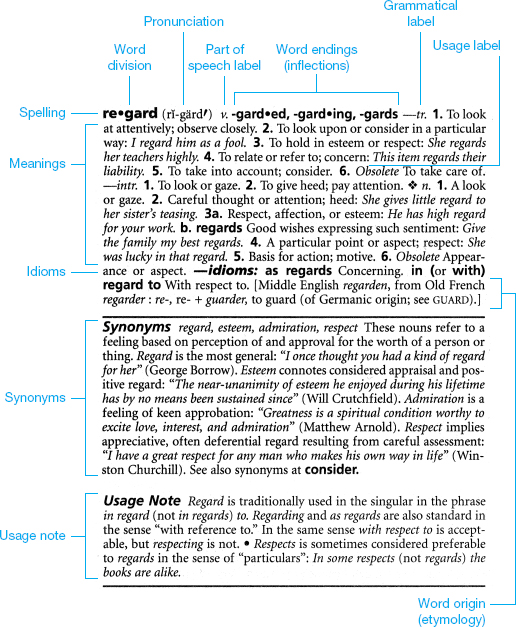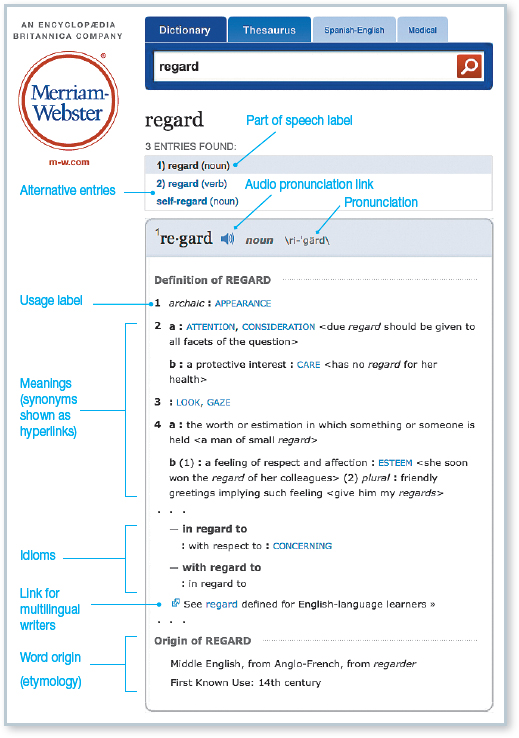43b. The dictionary
A good dictionary, whether print or online—such as The Random House College Dictionary or Merriam-Webster online — is an indispensable writer’s aid.
A sample print dictionary entry, taken from The American Heritage Dictionary of the English Language, and a sample online dictionary entry, taken from Merriam-Webster online, appear at the bottom of this page.
Spelling, word division, pronunciation
The main entry (re•gard in the sample entries) shows the correct spelling of the word. When there are two correct spellings of a word (as in collectible, collectable), both are given, with the preferred spelling usually appearing first.
The dot between re and gard separates the two syllables and indicates where the word should be divided if it can’t fit at the end of a typed line (see 44f ). When a word is compound, the main entry shows how to write it: as one word (crossroad ), as a hyphenated word (cross-stitch), or as two words (cross section).
The word’s pronunciation is given just after the main entry. The accents indicate which syllables are stressed; the other marks are explained in the dictionary’s pronunciation key. Many online entries include an audio link to a voice pronouncing the word.
Word endings and grammatical labels
When a word takes endings to indicate grammatical functions (called inflections), the endings are listed in boldface, as with -garded, -garding, and -gards in the sample print entry.
Labels for the parts of speech and for other grammatical terms are sometimes abbreviated, as they are in the print entry. The most commonly used abbreviations are these:
| n. | noun | adj. | adjective |
| pl. | plural | adv. | adverb |
| sing. | singular | pron. | pronoun |
| v. | verb | prep. | preposition |
| tr. | transitive verb | conj. | conjunction |
| intr. | intransitive verb | interj. | Interjection |
Meanings, word origin, synonyms, and antonyms
Sometimes a word can be used as more than one part of speech (regard, for instance, can be used as either a verb or a noun). In such a case, all the meanings for one part of speech are given before all the meanings for another, as in the sample entries.
The origin of the word, called its etymology, appears in brackets after all the meanings in the print and online versions.
Synonyms, words similar in meaning to the main entry, are frequently listed. In the sample print entry, the dictionary draws distinctions in meaning among the various synonyms. In the online entry, synonyms appear as hyperlinks. Antonyms, which do not appear in the sample entries, are words having a meaning opposite from that of the main entry.
Usage
Usage labels indicate when, where, or under what conditions a particular meaning for a word is appropriately used. Common labels are informal (or colloquial ), slang, archaic, poetic, nonstandard, dialect, obsolete, and British. In the sample print entry, two meanings of regard are labeled obsolete because they are no longer in use. The sample online entry has one meaning labeled archaic.
Dictionaries sometimes include usage notes as well. Advice in the notes is based on the opinions of many experts and on actual usage in current publications.
PRINT DICTIONARY ENTRY

ONLINE DICTIONARY ENTRY
